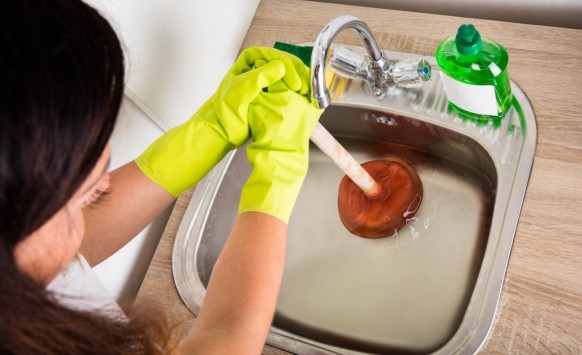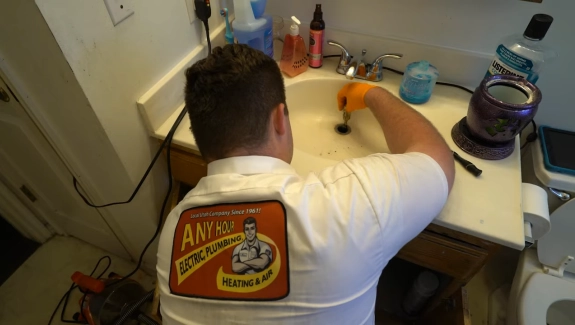Drainage systems often get clogged with gunk. This debris builds up which can cause pipes to back up. There are some ways to prevent a lot of that from happening, though. In this article, we go over some preventative measures you can take to keep drains flowing right. That way you can avoid expensive repair costs coming from a backup.
Plunge First: The first step to clearing a clog is to try the plunger. Set the plunger in or around the drain, get a good seal, and press down hard several times. The air pressure can force a blockage down the pipes and let water flow again. Sink plungers are good for some sinks and tubs, and accordion plungers are decent for toilets. Toilet (or flange) plungers are the most versatile option. That said, never use the same plunger used in a toilet anywhere else.
Start Mild: If the plunger isn't clearing your drain, now it's time for a classic solution. Pour some baking soda down the drain followed by some vinegar, then let it sit for 5 minutes. After that, wash it down the pipes with some hot water. This mild chemical reaction can break down clogs without eating the walls of your pipes.

Go Fishing: Use a coat hanger, crochet hook, or something similar on your drain to try and pull what you can out. Or, for your kitchen sink, while your disposal is off, reach your hand down the drain to try and get any solids out. You can also try removing the P-trap underneath the sink to clean out blockages. Getting rid of as much gunk as you means there’s more space for the water to drain.
Enzymes to the Rescue: If your drain is still slow, your next step is to try an enzyme drain cleaner like Bio-One. The bacteria inside feed on stuff like grease, hair, or food. But, because they only eat organic matter, they won’t damage your pipes. Just follow the instructions on the bottle and let it sit overnight.
